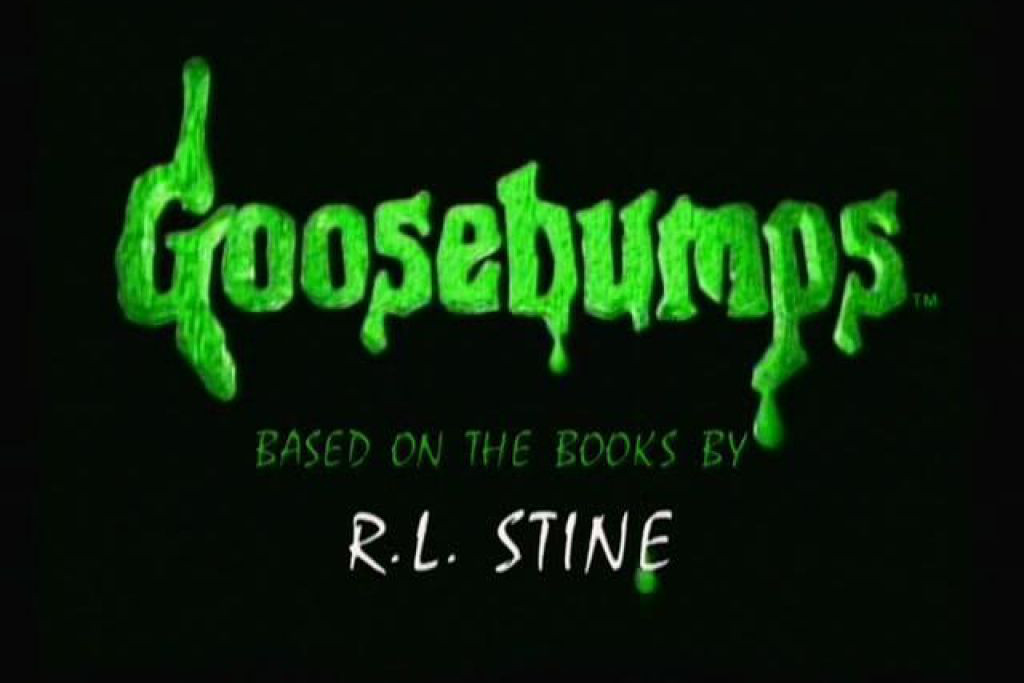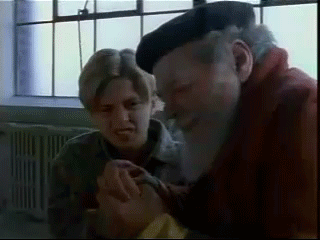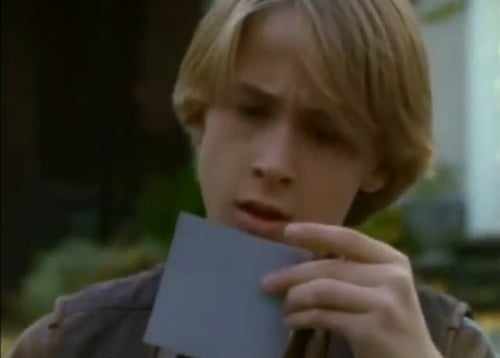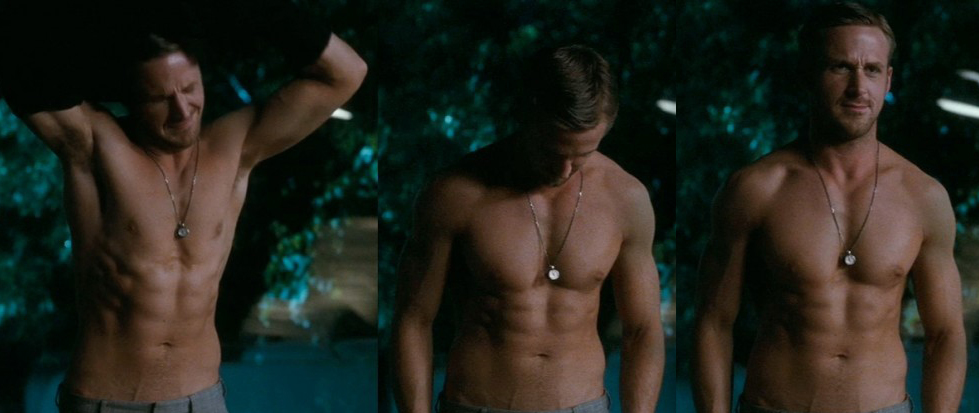Was Goosebumps The Greatest Kids’ TV Show Ever?
The TV series based on R.L. Stine's classic books is now available on Netflix.

Bless Netflix. Junkee has already established that easy access to their vast library of television can be detrimental to your health, but things just got a whole lot cooler if you were a child of the ’90s. Famed children’s author R.L. Stine took to Twitter recently to announce that 13 episodes of Goosebumps were made available on Netflix to be viewed by anybody with a hankering for childhood nostalgia and boogiemen of the PG variety. I think we can all agree that this was why streaming services were invented, right?
“Beware… you’re in for a scare!”
If you’re reading this then I’m guessing you remember Stine’s series of supernatural horror and sci-fi books that ran from 1992 to 1997, amassing a total of 62 titles. That’s not including the various spin-offs that included ‘Choose Your Own Adventure’ editions and Goosebumps 2000, which were released in the late ’90s and aimed at older audiences. There was even a great computer game based on ‘Welcome To Horrorland‘, which I owned and played often. Stories typically involved pre-teen or pubescent protagonists dealing with a monster, an alien, a supernatural force, or mystical entity. There’s usually a best friend or younger sibling along for the ride, and authority figures who don’t put any stock in their child’s frenzied pleas. Kids: they can’t catch a break!
The novels were a great entry into the genre — and probably books in general — for young folks, and dealt with themes that, even today, most of the target audience could identify with. The television series that followed, which began in 1995 and ended in 1998, was immensely popular. Now with thirteen episodes available online (and even more on US iTunes), we can take a look at the highlights that made it such a memorable part of so many childhoods.
–
The Opening
First off, I have to acknowledge the wonderfully kitschy opening credits that show a faceless R.L. Stine walking along the edge of Suburbia, USA (or Canada since that’s where it was filmed), when his briefcase suddenly flips open and unleashes page after page of spooky shenanigans. The instantly catchy theme song sets the freaky-fun mood, and there’s even a dog with glowing eyes that barks along. Amazing.
–
‘The Girl Who Cried Monster’
Basically, ‘The Girl Who Cried Monster’ (issue no. 8, published May 1993) is The Boy Who Cried Wolf with added bug-eating aliens and vampires. It’s no surprise that this was an early episode, since it encompasses EVERYTHING that the books were about. Best of all is that our heroine, Lucy (someone named ‘Deborah Scorsone’, in her only credited performance), is a fan of books, especially scary ones, and lives in a world of imagination. I’m sure many viewers could identify. She enjoys scaring her little brother, so when she discovers the librarian is a monster, nobody will believe her! Within minutes there are fake shocks, black cats literally falling into frame out of nowhere, and it all ends in a rather gooey mess.
–
‘It Came From Beneath The Sink’
Kat is a tomboy — hello, she wears plaid, boots, and a bandana — who discovers an alien sponge underneath the sink of her family’s new home. One character jokes, “This is better than The X-Files”, but it actually recalls Buffy The Vampire Slayer with its climactic action sequence inside a junior high science laboratory.
–
‘The Cuckoo Clock Of Doom’
Winner of the Writer’s Guild of America Award for children’s television, ‘The Cuckoo Clock Of Doom’ (issue no 28, pub. February 1995) is an example of the series’ canny ability to play childhood wish fulfillment. Michael Webster fiddles with his father’s supernatural cuckoo clock, and finds his life reversing through time. At first it means getting to make right when his bratty sister ruins his birthday party, but eventually he’s a baby trying to get to the local antique store to fix his dilemma.
–
‘Welcome To Camp Nightmare (Parts 1 & 2)’
Summer camps were a favoured motif for Mr Stine, featuring in the superlative, including ‘The Horror At Camp Jellyjam’ (no. 33, pub. July 1995), ‘Ghost Camp’ (issue no. 45, pub. July 1996), and ‘The Curse Of Camp Cold Lake’ (issue no. 56, pub. July 1997). ‘Welcome To Camp Nightmare’ (issue no. 9, pub. May 1993) is not one of his best, but the story has a novel hook on which to base a two-part episode: the camp is a secret teen-army recruitment agency! The first of the series to feature a potential pubescent romance, plus pun-tastic dialogue like “Camp Nightmoon? More like Camp Nightmare!”, this episode is basically M. Night Shyamalan’s The Village with a dash of Oliver Twist. Make of that what you will.
–
‘The Phantom Of The Auditorium’
They don’t even bother pretending that ‘The Phantom Of The Auditorium’ (issue no. 24, pub. October 1994) isn’t just a blatant rip-off of The Phantom Of The Opera. A school drama class is putting on a performance of ‘The Phantom’, only to discover that the auditorium is haunted just like the story. There are gloved hands appearing from behind curtains, malfunctioning trap doors, mysterious janitorial staff, and snooty-nosed drama class divas. It’s ridiculous and fun, and features Julia Chantrey who had small roles in Mean Girls and this year’s Jessica Chastain-starring horror flick, Mama.
–
‘Piano Lessons Can Be Murder’
Sigh. The visual effects of this series were never going to approach Jurassic Park, but the ghostly apparitions in ‘Piano Lessons Can be Murder’ (issue no. 13, pub. November 1993) are pretty darn poor. Piano-playing robots with creepy tendencies weren’t terribly exciting in the book and they’re not exciting here, either. Strangely, the episode appears to condone giving up art, imagination and invention for, uh, basketball.
–
‘My Hairiest Adventure’
By far the biggest LOL generator of the series. ‘My Hairiest Adventure’ (issue no. 26, pub. December 1994) takes the whole puberty allegory to hilarious heights when four friends start “growing hair in weird places” and spending inordinate amounts of time in the bathroom. In fact, they don’t even try to disguise it as being about anything else with dialogue such as “It was pretty embarrassing talking to a girl about body hair, even if she is my best friend.” I don’t recall the book being so overt, but, ahem, maybe I was just too young to understand its meaning.
–
‘The Return Of The Mummy’
What’s with mummies making for bad subjects in supernatural television series? Need I remind you of the dreaded ‘Inca Mummy Girl’ episode of Buffy The Vampire Slayer’s second season? In ‘The Return Of The Mummy’ (issue no. 23, pub. September 1994), two children are allowed into an ancient Egyptian tomb before anybody else, which makes no sense at all.
–
‘Night Of The Living Dummy 2’
The book that this episode was based on (issue no. 31, pub. May 1995) is actually a sequel, but the series producers skipped over that one and went straight to the good stuff. Evil, demonic ventriloquist’s dummy Slappy wreaks havoc on a perfect nuclear family. It’d be easy to mistake it for heartwarming if it weren’t such a subversive take on family dynamics. The makers are clearly revelling in being able to push a few buttons with crude jokes from Slappy’s potty mouth, and the episode is one of the best.
–
‘Stay Out Of The Basement (Parts 1 & 2)’
RL Stine: making eco-horror cool for the pre-teen set since 1992. In ‘Stay Out Of The Basement’ (issue no. 2, pub. July 1992), a recently fired university scientific botanist (?!?) conducts a secret experiment in the basement that blends plant and human DNA. Why this is a two-parter, I don’t know… but it paints a pretty poor picture of parenting in ‘90s America.
–
‘Say Cheese And Die’
Coming from a book with perhaps the most memorable cover (issue no. 4, pub. November 1992), this episode — the best yet — is memorable for another reason: it stars the one and only Canadian future sex symbol Ryan Gosling, as a young kid who discovers a camera that can predict the future. The plot is filled with inventive, fun writing (“Say cheese.” “Cheddar!”), and a villain that looks a lot like Alan Cumming. Ryan’s very ‘90s, foppish, cascading hair belies the fact that he was clearly a cute kid. Still, who knew he’d go from this:
To this:
–
Despite much of the kitschy humour, Goosebumps was a children’s show that treated its young viewers with intelligence and respect, and taught them to be intuitive, creative, and curious about the world (and that being book smart can actually be kinda cool). That’s worth a lot more than some cheap thrills.
–
Glenn Dunks is a freelance writer and film critic from Melbourne, and currently based in New York City. His work has been seen online (Onya Magazine, Quickflix), in print (The Big Issue, Metro Magazine, Intellect Books Ltd’s World Film Locations: Melbourne), as well as heard on Joy 94.9.



